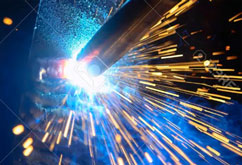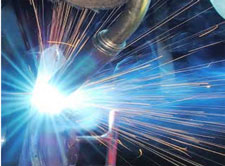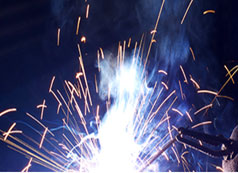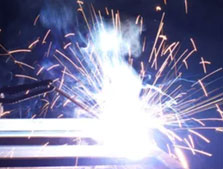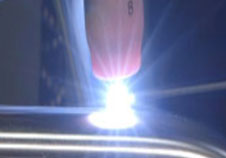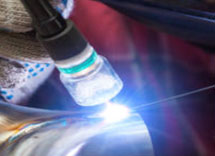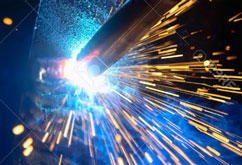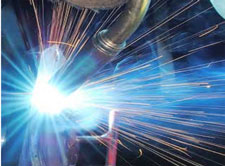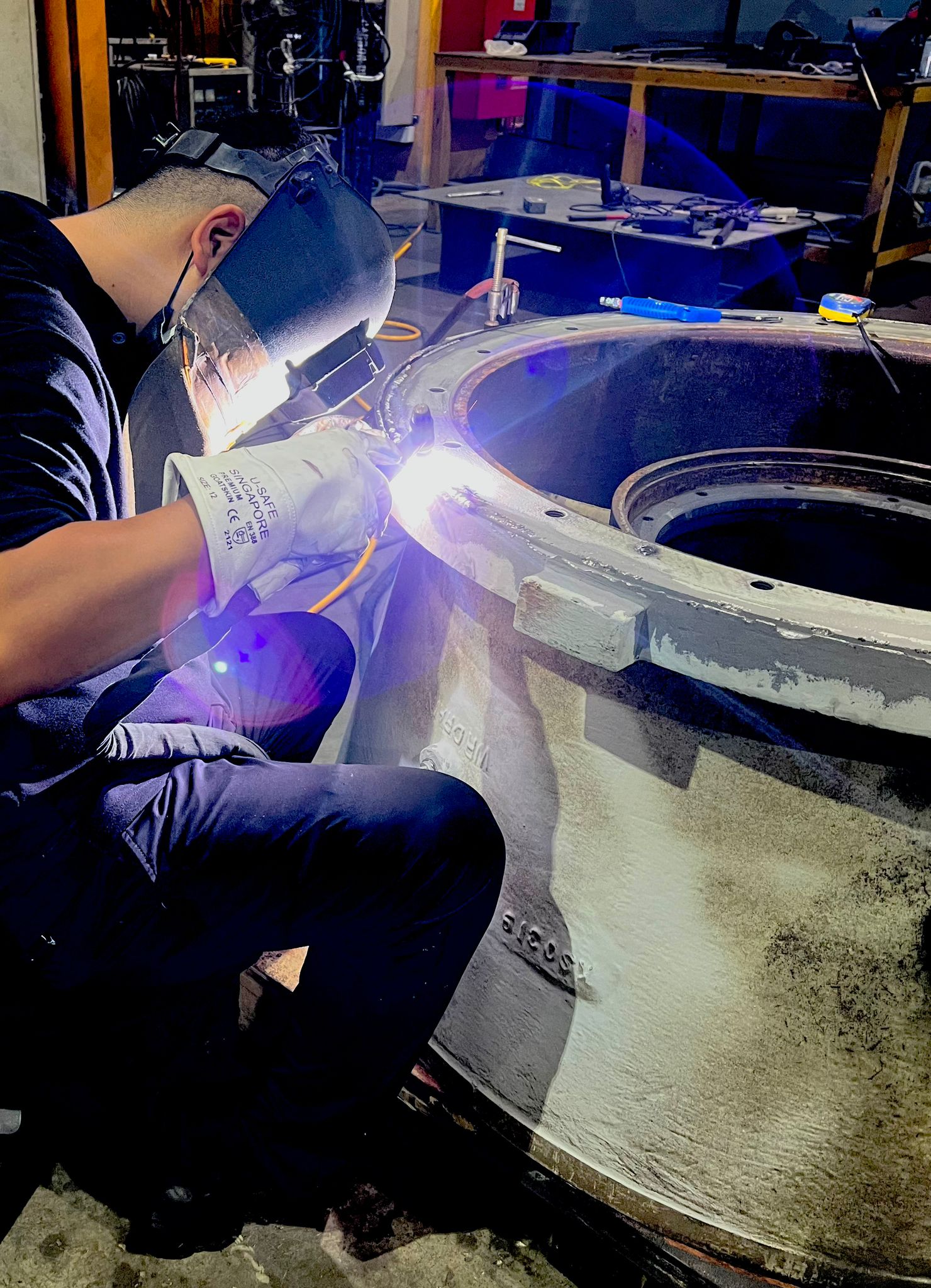Services Back
Welding Technology
It was reported that, there was archaeological evidence of early Egyptian welding dates back as far as 3000 - 4000 B.C. It was believed that Egyptian started with copper at the beginning. Over time, moved on to other metals like iron, bronze, gold and silver. Many more examples were discovered, especially during the Bronze Age at approximately 1000 B.C.
In 1800s, acetylene was discovered, and many arc welding related development taken places. Late 1880s and early 1900s were crucial milestone of welding development, and obviously, many technological breakthrough and improvement were done along the 1990s, contributing greatly to shipbuilding, oil and gas and power generation industry.
Welding Technology
It was reported that, there was archaeological evidence of early Egyptian welding dates back as far as 3000 - 4000 B.C. It was believed that Egyptian started with copper at the beginning. Over time, moved on to other metals like iron, bronze, gold and silver. Many more examples were discovered, especially during the Bronze Age at approximately 1000 B.C.
In 1800s, acetylene was discovered, and many arc welding related development taken places. Late 1880s and early 1900s were crucial milestone of welding development, and obviously, many technological breakthrough and improvement were done along the 1990s, contributing greatly to shipbuilding, oil and gas and power generation industry.
In modern world today, nothing could really exist without certain form of welding technological contributions, be it automotive, aerospace, semiconductor and the construction industry, and many others.
WHAT IS WELDING
Welding is a very common process whereby any laymen on the street also can understand and articulate to one-another. In the real Engineering World, this can be a very involved, very broad studies and profound technological field. It is also an area of never ending on-going research and development effort by many engineers, scientists, and institutional researchers, working towards more breakthrough; Especially in the domain of material science, methodology, quality, efficiency and the deployment of automation, robotic and artificial intelligent (A.I.).
In a simplest concept, welding is simply a process by which two pieces of materials joined together with diffusion, fusion or metallurgically integrated together. Welding can be commonly created using gas, electrical arc, plasma arc and even laser energy etc. to melt the joining materials. Other identical processes are named differently because of the difference in work purposes… example Brazing, Cladding etc, under atmospheric condition or in vacuum environment etc… but we do not discuss here.
Different Types of Welding
There are many different welding methods. Most commonly seen welding methods are Electric Arc Welding, MIG (Metal, Inert Gas) or GMAW (Gas, Metal Arc Welding), and TIG (Tungsten Inert Gas) welding.
The term “Arc Welding” may be confusing, because many welding methods are actually relying on “Arc Welding” principal. For Example:
- Carbon Arc Welding
- Plasma Arc Welding
- Metal Arc Welding
- Gas Tungsten Arc Welding
- Gas Metal Arc Welding
- Submerged Arc Welding
- SMAW – Shielded Metal Arc Welding
- FCAW (Flux Cored Arc Welding)
- ESW (Electro-Slag Welding)
- Arc Stud Welding
Other examples of welding methods may include spot, tack, energy beam, atomic hydrogen, wood, plastic….and perhaps many more.
In Offshore and Marine applications, welding can be done underwater.
Welding Processes in WWG Engineering
In WWG Singapore Engineering Services production facility, we mainly focus on three most demanded welding methods in the industry, which are Electric Arc Welding (we just call Arc Welding), MIG (Metal, Inert Gas) or GMAW (Gas, Metal Arc Welding), and TIG (Tungsten Inert Gas) welding.
We also can perform brazing and silver soldering depending on work requirements.
Welding Specialization in WWG Engineering
We have highly skilled and experience staff in our welding department along with the right equipment and tools.
Our core welding applications are mainly on stainless steel, aluminium, mild steel and plastic.
We work in a plethora of industries so we can cater for most requirements. So if you need a small sheet metal component or a large one off frame, we can help
At WWG Engineering, we are offering:
- Repairs to existing equipment or components including reworking and rewelding of damaged items or replacement of parts where it is uneconomical to fix.
- Specialised welding including MIG, TIG and manual metal arc welding.
- In house non-destructive testing with magnetic particle inspection.
- Building up worn components in our welding lathe.
- Site fabrication and welding including being equipped with single phase welding equipment.
Electric ARC Welding
In the industry, Electric Arc welding is usually called “Arc Welding”. More specifically, it is SMAW, which stands for “Shielded Metal Arc Welding” or sometimes just called stick welding because the welding consumable material a “stick” or “rod”.
The welding rod is covered with flux coating. The flux material melts during the welding process forming slag & gas to protect the weld pool from the surroundings. As such, this flux shielded arc welding is also called “manual metal arc welding“ (MMA/MMAW).
A power supply creates an electric arc between a consumable or non-consumable electrode whereby the base material can be using either direct (DC) or alternating (AC) currents.
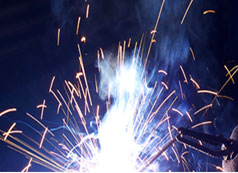
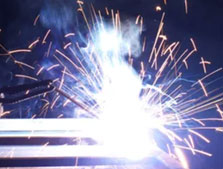
TIG Welding
Tungsten Inert Gas is commonly known as TIG welding in the industry. It is also known as Gas Tungsten Arc Welding (GTAW). TIG welding is basically an arc welding process that produces the weld with a non-consumable tungsten electrode.
Like other welding method, TIG can be used to weld many metal and alloy materials. Historically, it has been well-known that this TIG welding process became an overnight success in the 1940s for successfully joining magnesium and aluminium materials. Unlike the Electric Arc welding, TIG welding utilises an inert gas to shield and protect the weldpool instead of the flux. Since the invention, TIG has played a major role in the acceptance of precision welding in many manufacturing processes. It is especially vital in welding aluminium, steel and their alloys. “Precision” here refers to small and thin weldments on very thin materials, up to as thick as 8 – 10 mm materials, that require high quality welding and structural applications in many critical industrial applications.
TIG process can be fully automated when comes to manufacturing process. The welding arc is generated between pointed tungsten electrode and the workpiece under coverage of argon or helium gas. When needed, welding materials of metal or alloy in the form of filler-rod is added to the weldpool during the TIG welding process. The electrical power source here can be either DC or AC.
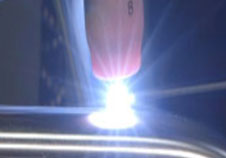
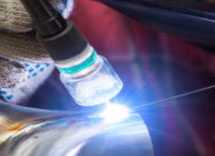
MIG
Metal Inert Gas is most commonly known as MIG. This is also an arc welding process. It uses a continuous solid wire electrode heated and fed into the weldpool from a welding gun, which is quite different from a “filler-rod” method of the TIG. The weldpool is protected from airborne contaminants by shielding gas.
Unlike TIG welding, MIG is generally used for larger and thicker materials. It employs a consumable wire that acts as both the electrode and the filler material. MIG is not for precision welding because of its “wilder arc” and larger weldments due to much faster in terms of welding rate and speed. As such, for areas of appropriate applications, it can result in very much shorter lead times and lower production costs.
